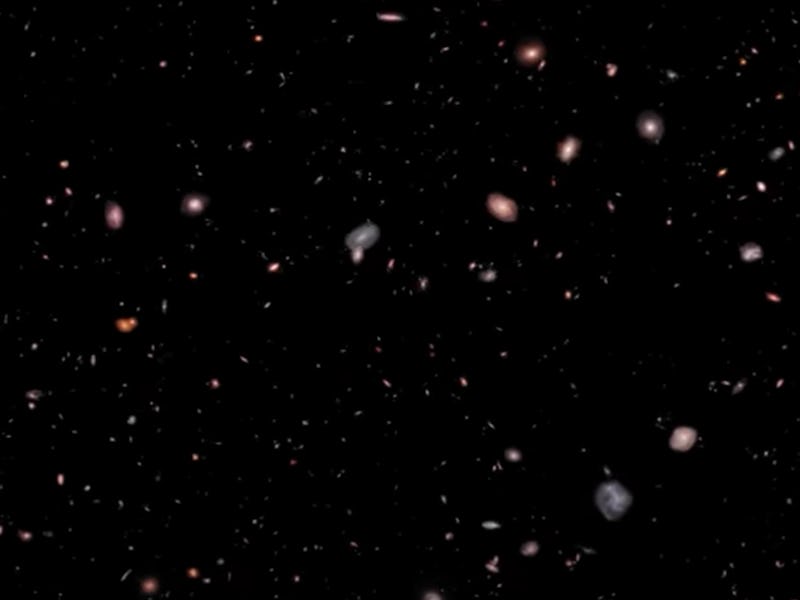New Webb Telescope Visualization Lets You Fly Through the Ancient Universe in 3D
The Space Telescope Science Institute's visualization team turned JWST deep field data into a 3D spaceflight adventure.

Buckle up for a flight through space, past thousands of galaxies, at 200 million light years per second. We’re pretty sure that’s faster than the Millenium Falcon can make the Kessel Run.
JWST recently stared deep into a patch of space called the Extended Groth Strip, which definitely sounds like someplace you’d find in the Star Wars Universe (although you can actually find it in the night sky between the constellations Ursa Major and Boötes). The Space Telescope Science Institute, which operates JWST and the Hubble Space Telescope, turned that deep field data into a 3D flight through intergalactic space and far into the universe’s past.
There are at least 100,000 galaxies (that we know of) just in the narrow slice of sky called the Extended Groth Strip, stretching from our Milky Way’s nearest neighbors and out across more than 13 billion light years of space, but this visualization tours “just” 5,000 of them. on the route to Maisie’s Galaxy, a distant reddish galaxy whose light began the journey to Earth just 390 million years after the Big Bang.
Travel Through Space, Time, and Spacetime
The visualization’s designers converted infrared light into colors your eyes can actually see.
As you fly through the Extended Groth Strip, every second takes you 200 million light years farther from home. At first, most of the passing galaxies will look pretty similar to our own Milky Way: bright, intricate spirals in shades of yellow, white, and blue, tilted at every possible angle. But as you travel through space, you’re also traveling back in time.
Light takes time to travel across space, so by the time the light from a distant galaxy reaches JWST’s mirrors, it’s actually a snapshot of the galaxy as it looked sometime in the past. And because the universe is still expanding in the wake of the Big Bang, everything we see in space is moving away from us. That movement stretches light from distant galaxies into longer wavelengths — so as you move deeper into the Strip, the galaxies around you will start to look redder. They’ll also get smaller and less complex. This is what galaxies looked like billions of years ago, before new star formation and mergers with other small galaxies shaped them into the huge spirals that dot the modern universe.
As you near the end of your journey, you’ll pass galaxies whose light has been stretched into the very long wavelengths of infrared light, which our eyes can’t see — but JWST can. Eventually, you reach your final destination: a galaxy called Maisie’s Galaxy, as it appeared 13.4 billion years ago, less than half a billion years after the universe began.
“We couldn’t study galaxies like Maisie’s Galaxy before [JWST] because we couldn’t see them,” says Rochester Institute of Technology astrophysicist Rebecca Larson in a recent statement. “Now, not only are we able to find them in our images, we’re able to find out what they’re made of and if they differ from galaxies that we see close by.”
The Hubble Space Telescope (which also studied the Extended Groth Strip back in 2004) could see the universe in visible light, as well as shorter ultraviolet wavelengths and longer infrared, but JWST can see deeper into the infrared spectrum, and with much higher resolution, so it’s revealing galaxies that even the venerable (and still awesome) Hubble couldn’t see. The early universe turns out to have more galaxies than most astrophysicists predicted.
According to University of Texas astronomer Steven Finkelstein, the principal investigator of CEERS, the Cosmic Evolution Early Release Science Program (which gathered the data for the 3D journey you just took), one of the team’s next goals is to use JWST to study how stars formed in those early galaxies. Astronomers want to know whether stars formed at a steady pace, or whether there were explosive bursts that formed clusters of massive, bright stars.